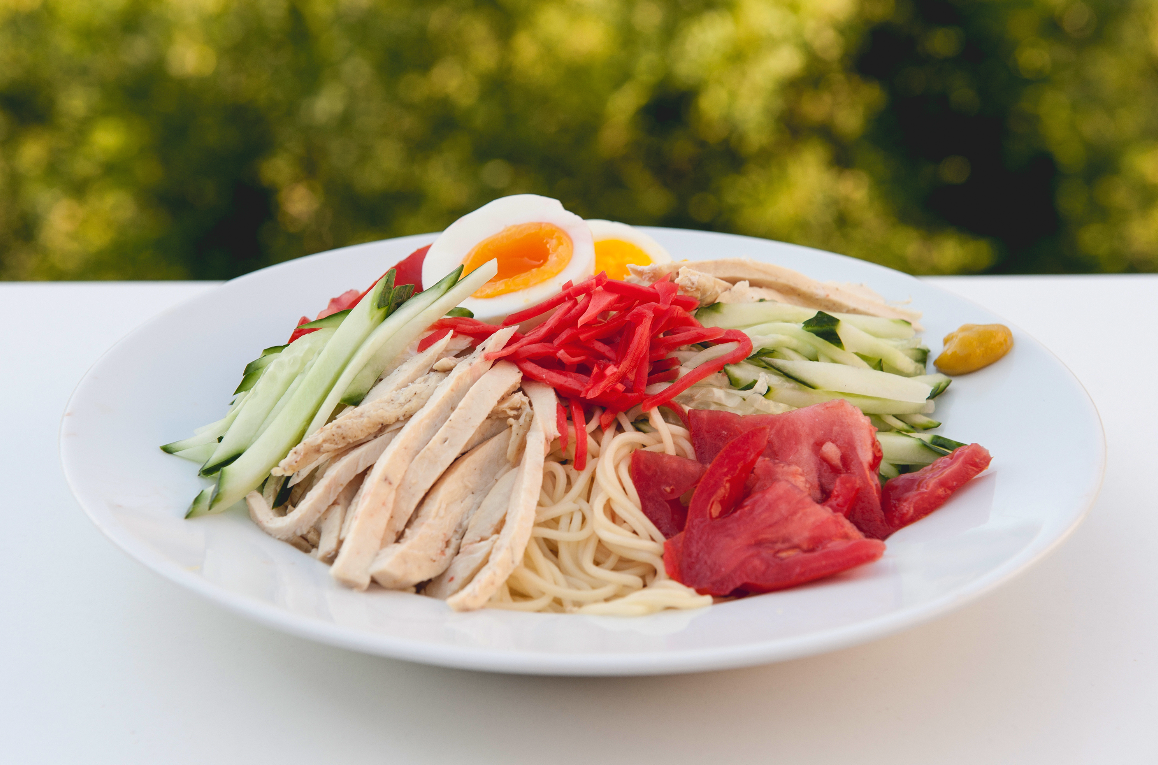If a Japanese dish bears the name chūka, meaning Chinese, chances are it's not really Chinese at all, but a Japanese invention with Chinese-inspired flavors.
Such is the case with hiyashi chūka, a cold noodle dish that is a popular summertime fixture. While there are cold noodles dishes in real Chinese cuisine, they are usually cooled down by rinsing them briefly at most, or fanning them. But the Chinese-style noodles used for hiyashi chūka are cooled in the same way more traditional Japanese noodles such as soba, sōmen, hiyamugi and udon are — by rinsing them vigorously in several changes of cold water, rubbing away any surface starch. The cold water treatment not only stops the cooking process and cools down the noodles quickly, it's also believed to improve the texture by firming them up. Another name for hiyashi chūka (the name used depends on what region you're in) is hiyashi ramen — chilled ramen — and that's essentially what it is; a cold version of the Japanese-adapted version of Chinese noodle soup.
While there are mentions in Japanese publications of Chinese-style cold noodles dating back to the 1920s, the most popular theory for how this dish was born holds that it was invented in the city of Sendai, Miyagi Prefecture, at a Chinese restaurant called Ryutei, in the summer of 1937.


















With your current subscription plan you can comment on stories. However, before writing your first comment, please create a display name in the Profile section of your subscriber account page.